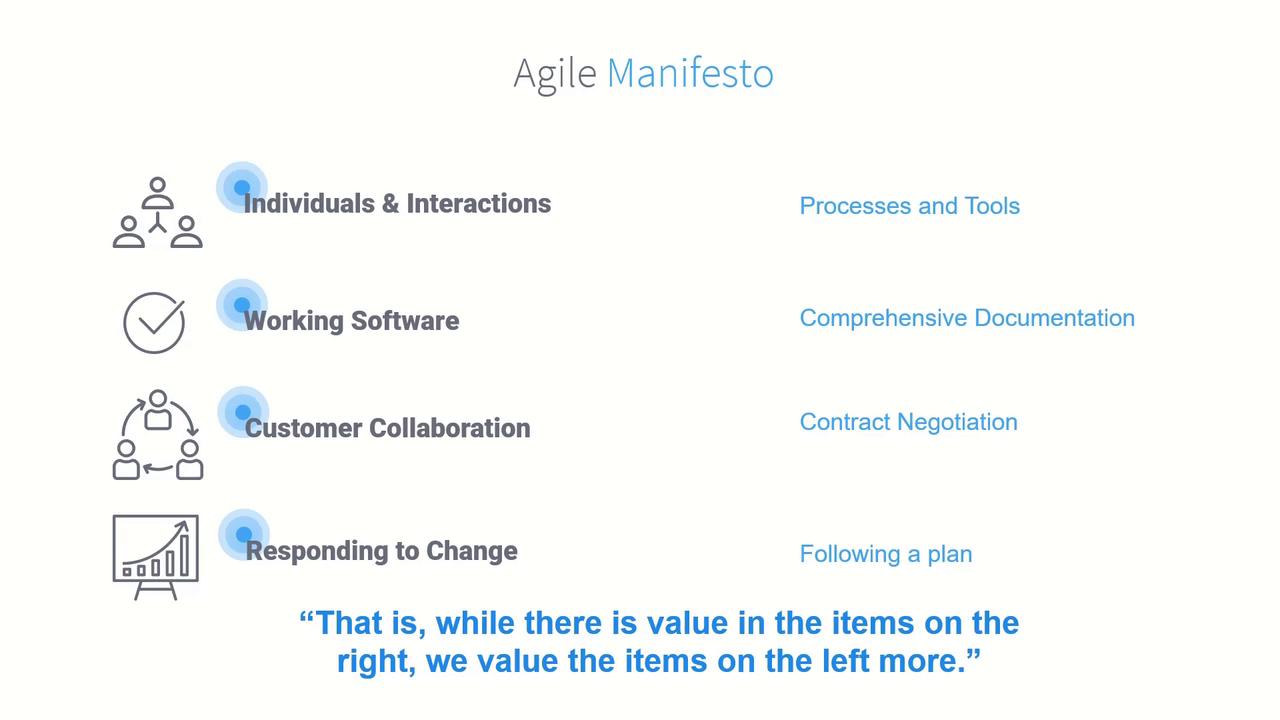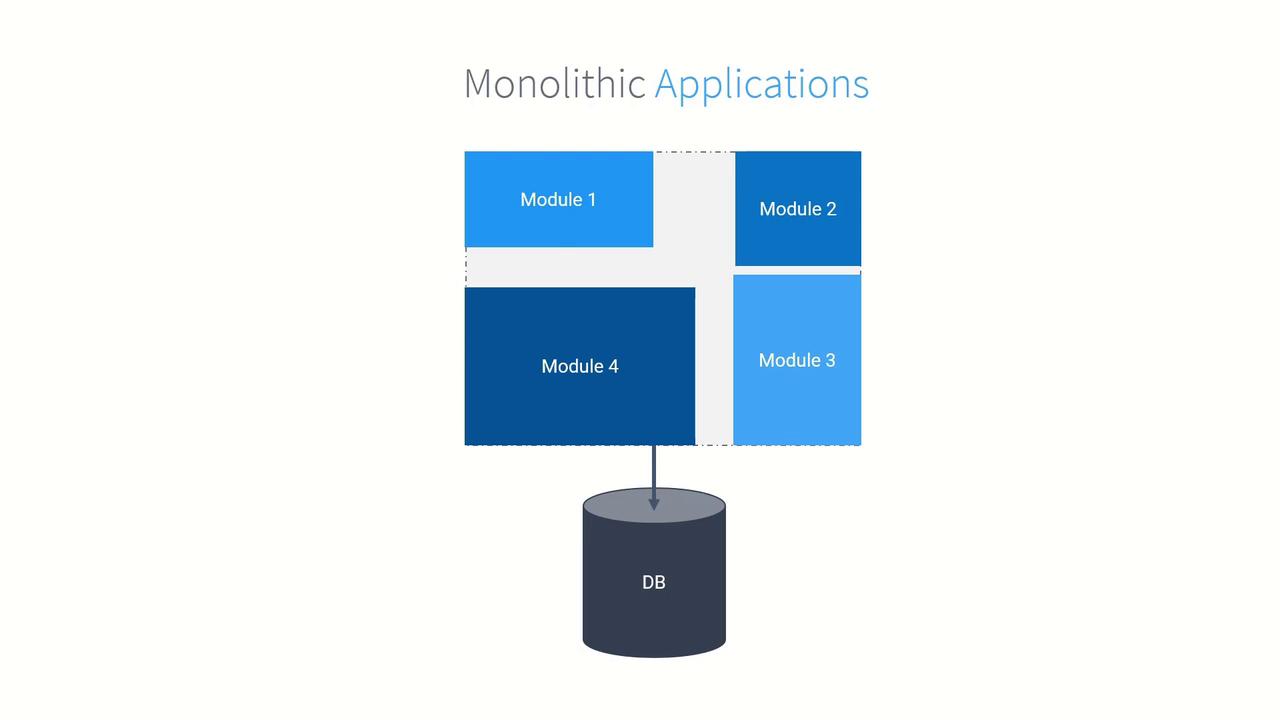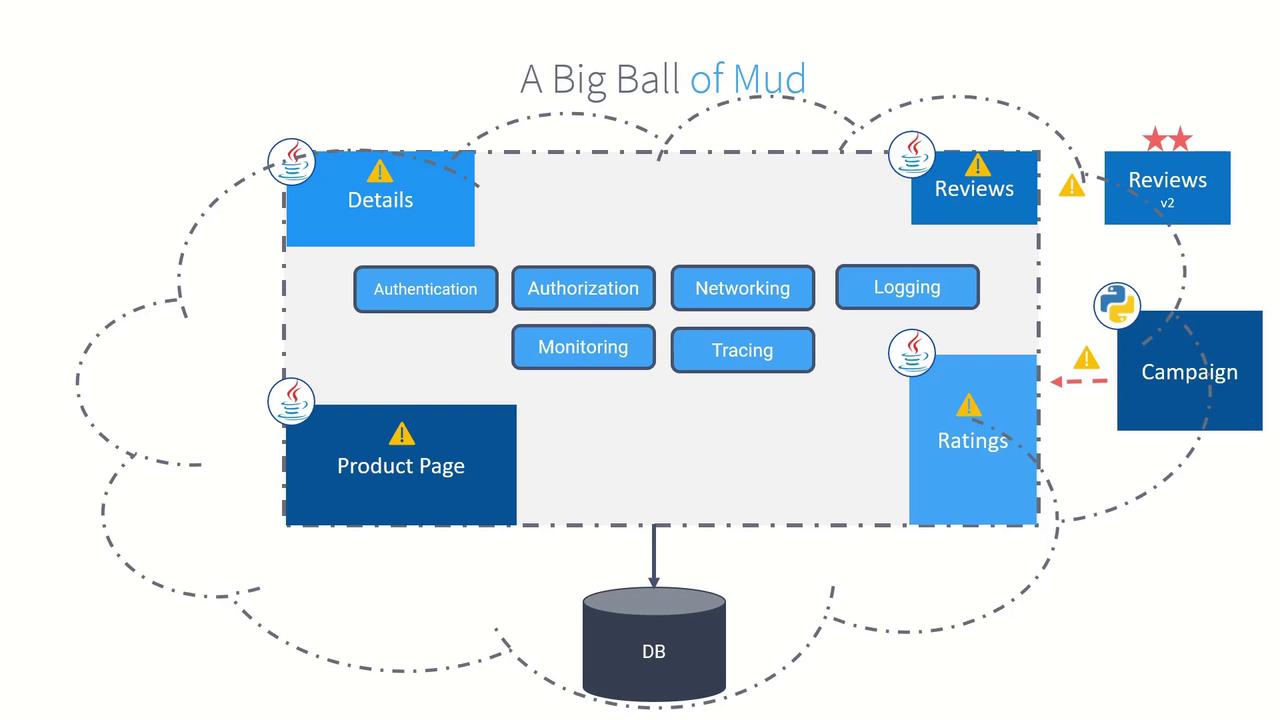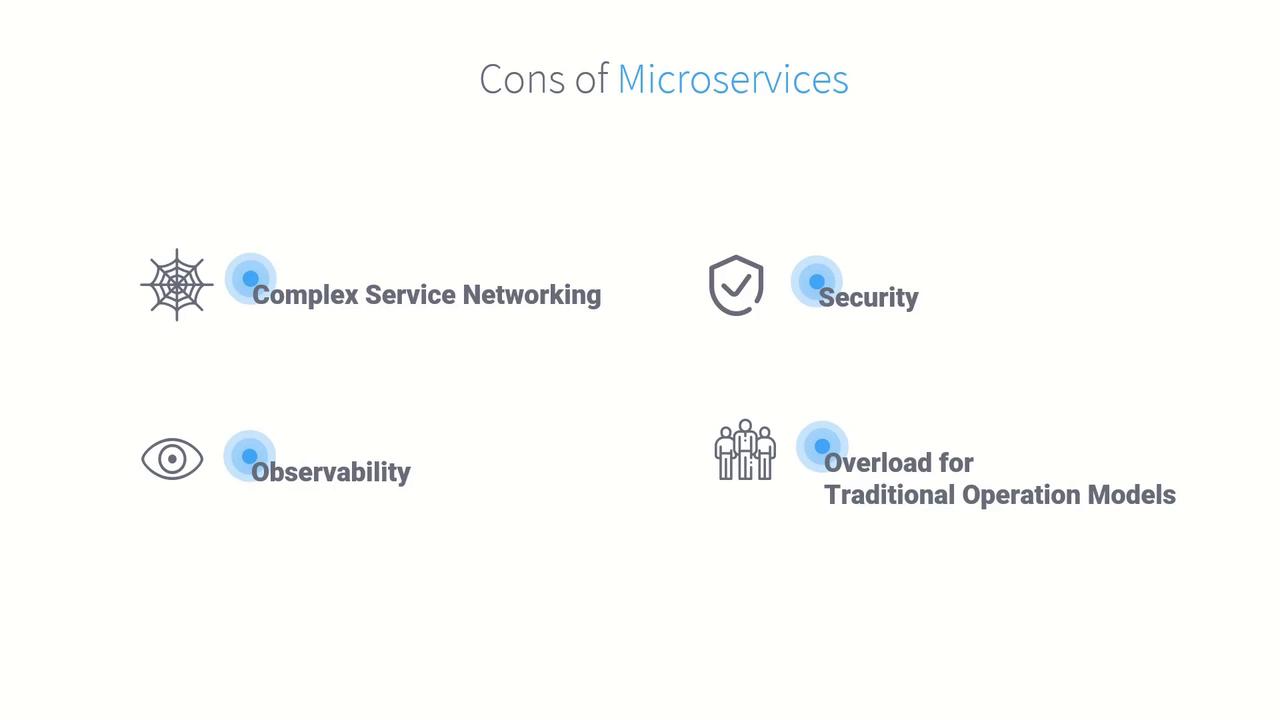Kubernetes and Cloud Native Security Associate (KCSA)
Platform Security
Service Mesh Monolithics vs Microservices
Before diving into Service Mesh and Istio, it helps to understand how software architecture has evolved—from monolithic applications to distributed microservices. This background sets the stage for why Service Meshes are crucial in modern cloud-native environments.
Evolution of Software Development
The Agile Revolution
In the early 2000s, lengthy, rigid development cycles often meant that delivered software no longer matched business needs. The publication of the Agile Manifesto in 2001 ushered in a new era:
We value Individuals & Interactions over processes and tools
Working Software over comprehensive documentation
Customer Collaboration over contract negotiation
Responding to Change over following a plan

This shift encouraged faster feedback loops, closer customer engagement, and iterative releases that adapt to real-world feedback.

Why Break Up Monoliths?
Monolithic applications bundle all features—presentation, business logic, data access—into a single deployable unit. While simple at first, they become bottlenecks for scaling, team autonomy, and innovation.
Monolithic Architecture
A monolith shares one codebase, one process, and typically a single database. Any update, no matter how small, requires redeploying the entire system.

Example: Book Info Monolith
Imagine a Book Info application in Java containing:
- Details
- Reviews
- Ratings
- Product Page
All modules live in one jar, calling each other and sharing a database.

Key drawbacks of this approach:
- Any change requires a full redeploy.
- You scale all modules together, even if only one needs it.
- Introducing new languages or modules means reworking the entire app.
- A single failure can bring down the whole system.
Over time, this pattern often devolves into a tangled “big ball of mud.”

Note
Refactoring a large monolith into services is a complex journey—both technically and culturally.
Transition to Microservices
Breaking your application into independently deployable services addresses many monolithic drawbacks. In our Book Info example:
- Product Page → Python service
- Details → Ruby app
- Reviews → Java service (now with A/B versions: no stars, black stars, red stars)
- Ratings → Node.js microservice
Users still see a unified page, but each component is separately scalable and upgradable.

Benefits of Microservices
| Benefit | Description |
|---|---|
| Scalability | Scale only the services under load |
| Faster Releases | Deploy small changes independently |
| Technology Agnosticism | Use the best language or framework per service |
| Resilience | Isolate failures and limit blast radius |
| Team Autonomy | Teams own services end-to-end |
![]()
New Challenges with Microservices
While microservices solve many monolithic issues, they introduce cross-cutting concerns:
| Challenge | Impact |
|---|---|
| Service Discovery | How services locate and communicate with each other |
| Security | Encrypting and authenticating inter-service and client-to-service |
| Observability | Correlating logs, metrics, and traces across distributed services |
| Operational Overhead | Managing multiple frameworks, languages, and deployment patterns |

Warning
Without a consistent platform for networking, security, and telemetry, microservices can become as difficult to manage as monoliths.
Emerging practices like DevOps bridge development and operations, but a dedicated layer—namely a Service Mesh—is often needed to handle these complexities at scale.
In upcoming sections, we’ll explore how Service Meshes simplify networking, security, and observability across microservices.
References
Watch Video
Watch video content